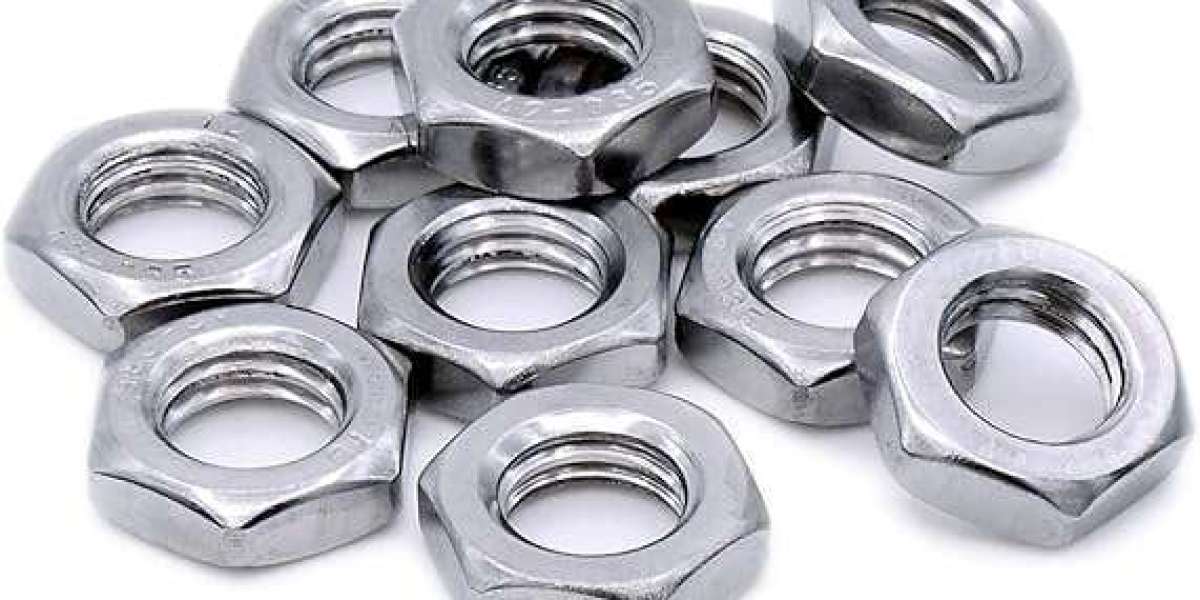Raw Materials Selection:
The selection of raw materials is a crucial starting point in the manufacturing process of stainless steel 17-4 PH hex nuts. Stainless steel, known for its corrosion resistance and durability, serves as the primary material. Specifically, 17-4 PH stainless steel is preferred for its exceptional strength and mechanical properties, making it ideal for demanding applications. This careful selection ensures that the resulting hex nuts can withstand extreme conditions and heavy loads, making them essential components in critical assemblies across various industries such as aerospace, automotive, and marine.
Precision Machining:
Following the raw material selection, precision machining techniques are employed to shape the stainless steel into hex nuts. This stage involves a series of intricate processes including turning, milling, and threading. Computer Numerical Control (CNC) machines are instrumental in this phase, allowing for precise and consistent shaping of the material. The hexagonal shape, vital for the functionality of the nuts, is meticulously crafted to exact specifications, ensuring seamless compatibility with corresponding bolts and screws. This precision machining guarantees the structural integrity and reliability of the finished hex nuts.
Quality Control:
Throughout the manufacturing process, rigorous quality control measures are implemented to maintain the highest standards of precision and reliability. Inspections are conducted at every stage of production to verify dimensional accuracy, surface finish, and material properties. Samples from each production batch undergo comprehensive testing to ensure compliance with industry specifications and customer requirements. This meticulous attention to detail guarantees that every stainless steel 17-4 PH hex nuts meets or exceeds performance expectations, providing peace of mind to end-users and manufacturers alike.
Heat Treatment:
After machining, the stainless steel hex nuts undergo a specialized heat treatment process to further enhance their mechanical properties. Heat treatment involves subjecting the nuts to controlled heating and cooling cycles, known as precipitation hardening. This process alters the microstructure of the material, resulting in increased hardness, strength, and toughness. By carefully controlling the temperature and duration of each phase, manufacturers can tailor the properties of the hex nuts to meet specific performance requirements. The resulting hardened structure ensures that the nuts can withstand high-stress environments and prolonged use without compromising integrity.
Surface Finishing:
To ensure both functionality and aesthetic appeal, the hex nuts undergo surface finishing treatments. These treatments include polishing, passivation, and coating, depending on the desired characteristics and applications. Polishing enhances the appearance of the nuts while also smoothing out any surface imperfections. Passivation removes impurities and contaminants from the surface, improving corrosion resistance and longevity. Additionally, various coating options such as zinc plating or black oxide can be applied to provide additional protection against corrosion and wear, further enhancing the durability and lifespan of the hex nuts.
The manufacturing process of stainless steel 17-4 PH hex nuts is a testament to the combination of craftsmanship, precision engineering, and technological innovation. From raw material selection to precision machining, heat treatment, surface finishing, and quality control, each step is carefully orchestrated to create durable and reliable components essential for critical applications across various industries. By understanding the intricate journey behind these seemingly simple nuts, we gain a deeper appreciation for the expertise and dedication that goes into their production, ensuring the continued reliability and safety of countless assemblies worldwide.








